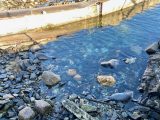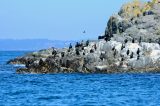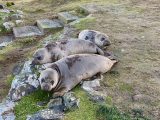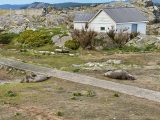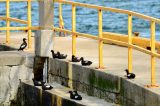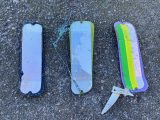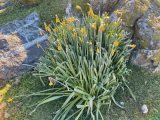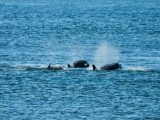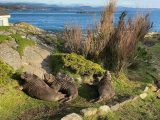Wind: yesterday variable 1-11 knots, today mostly W 2-17 knots
Sea State: both days calm
Visibility: yesterday 5-15 NM, today 10-15 NM
Sky: yesterday overcast, rain then clearing in early afternoon, today partly cloudy then clear from mid morning onwards
Temperature: yesterday 5-6 °C, today 5-10 °C
Atmospheric CO2: 414.34 ppm (recorded by NOAA at Mauna Loa Observatory, Hawaii)
I heard back about more information on the recently arrived female juvenile elephant seal pup, with green tags E103 and E135. Dr Patrick Robinson, the Director of the Año Nuevo Reserve and Lecturer at University of California Santa Cruz, sent a report of the history of the seal’s sightings and said, “It’s always great to get these updates… we greatly appreciate it!” The seal was born in the 2018 winter season, which makes her just over two years old. She was seen a lot during the winter and spring of 2018 at Año Nuevo Reserve. Researchers took two blubber samples to study bioaccumulation. The seal wasn’t seen again until the fall of 2019, when she spent a month at Race Rocks between September 7 and October 11. Fast forward a few months, the seal came back to Race Rocks two days ago, on March 23. She appears to be in the early stages of her catastrophic moult of her fur and skin, judging by the patches on her sides.
The youngest elephant seal pup returned yesterday morning from her one day adventure in the sea. She spent the whole day sleeping by the wood pile. The oldest pup has been gone for the past two days. A new adult female elephant seal arrived yesterday. She is most likely one of the four mothers that was here in January and February. So far the three have come back a month and a half after they each weaned their pups, which happened on January 21, February 4 and February 9.
At today’s 16:31 high tide, after recording the salinity and temperature of the water, I hooked up the hoses and pump to top up the seawater in the cistern. The gas powered water pump sucks water through a hose with a strainer dropped off the end of the jetty. The water is pumped through 76 m (250′) of fire hose up to the cistern. Over a couple hours, tens of thousands of litres of water were pumped into the underground cistern, which should feed the desalinator for the next month and a bit.
Yesterday, there was one pleasure boat that zoomed through Middle Channel and stopped by the rocks to take photos of sea lions. This afternoon, the Canadian Coast Guard lifeboat Cape Calvert, appeared to be out for a cruise around Race Rocks from the base in Victoria. They came in for a closer look and a couple of the crew appeared to be snapping photos of Race Rocks with their phones. This is a very photogenic place. This afternoon, Guy, Corey and Christine from Pearson College delivered a new fridge and took away the old one that recently stopped working. They also brought some fresh food from the Pearson kitchen, which is closing down for a while.
Here are a few photos from the past two days:
- A third adult female elephant seal, on the right, came ashore yesterday to join the moulting party.
- A sunny south view looking towards the big cumulus clouds over Port Angeles. There are eight harbour seals on the intertidal rock in the middle of the photo.
- I have been looking around for tulips lately, as I had seen some here in a previous spring. I found one tulip near some grape hyacinth in the old rock garden south of the house. The bud looks like it will open any day.
- The Canadian Coast Guard boat Cape Calvert, from Victoria, travelled around the island this afternoon and came in for a closer look off the south east side. Two thayer’s gulls are out of focus in the foreground.
- This evening as the stars were becoming visible, I was carrying equipment to put away in the boat house. I had a realization I get numerous times a day of how grateful I am to be in this amazing place. There is no other place I would rather be right now.














